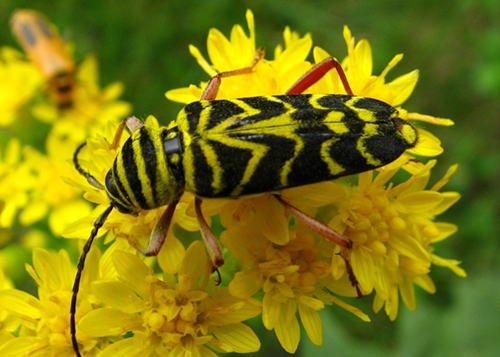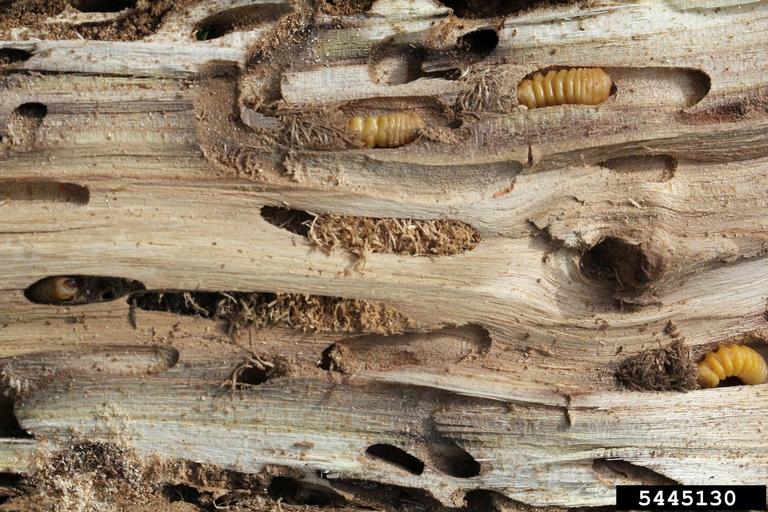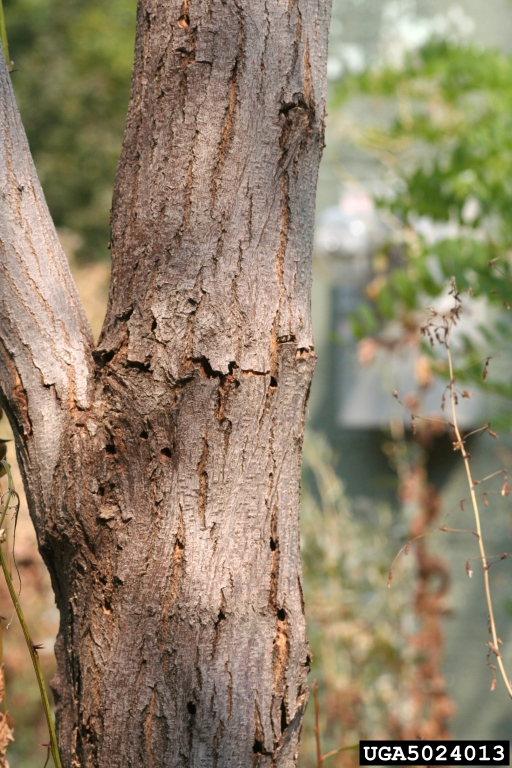Integrated Pest Management
Locust Borer
Megacyllene robiniae
Pest Description
- adults: 3/4 inch; black beetles with brilliant yellow markings
- larvae: up to 1 inch long; white grubs without legs
Host Plants, Diet & Damage
- black locust and its cultivars (e.g., purple robe locust)
- feed on the xylem of host trees
- extensive tunneling in the wood may cause structural weakness of branches or trunk
Biology, Life Cycle & Damaging Life Stage
- overwinter as larvae in the bark
- tunnel into and feed on heartwood in the spring and summer
- adults emerge around August, mate and lay eggs on the bark
- one generation per year
- larvae are the damaging stage
IPM Recommendations
- Manage trees to improve or maintain overall health.
- Prune infested wood/branches and chip or burn.
- Apply an insecticide (carbamate; pyrethroid) to the bark on the trunk and large scaffold branches in late-July/early-August prior to egg laying.
For more information, see our Locust Borer fact sheet.




